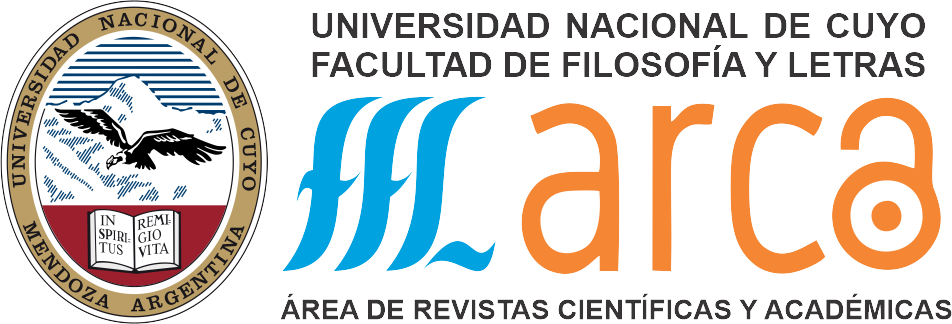Metafiction as Play: Duchampian Reappropriation and Self-Referentiality in Mario Bellatin’s El Gran Vidrio
DOI:
https://doi.org/10.48162/rev.34.043Keywords:
Metafiction, Game, Bellatin, Duchamp, ReappropriationAbstract
This paper proposes to analyze one of the key novels of Mario Bellatin, El Gran Vidrio (2007), homonymous to Marcel Duchamp’s masterpiece The Big Glass. After an introduction where we present an outline of the interpretational difficulties of Bellatin’s work, following Patricia Waugh’s book (1984) we offer a brief theoretical section on metafiction as game. Basing our analysis on Octavio Paz’s classic essay about the avant-garde artist (1973), we will reveal the principal thematic and structural analogies between text and image, in order to argue later about Bellatin’s method of reappropriation and the metafictional components of his novel. Thus, we will arrive to the last section, dedicated to conclusions, where we explain why El Gran Vidrio is a radical metafiction.
References
Barthes, R. (2009). La muerte del autor. En El susurro del lenguaje. Más allá de la palabra y de la escritura (págs. 75-83.). (C. Fernández Medrano, trad.). Paidós.
Bellatin, M. (2006). Lo raro es ser un escritor raro. En Pájaro transparente (págs. 105-124). Mansalva.
Bellatin, M. (2007). El Gran Vidrio. Anagrama.
Bollobás, E., (2012). Egy képlet nyomában. Karakterelemzések az amerikai és a magyar irodalomból. Balassi Kiadó.
Dällenbach, L. (1991). El relato especular. (R. Buenaventura, trad.). Visor. (Original publicado en 1977).
Detweiler, R. (1976). Games and Play in Modern American Fiction. Contemporary Literature, XVII/1, 44-62.
Epplin, C. (2012). Mario Bellatin y los límites del libro. En J. Ortega y L. Dávila (eds.), La variable Bellatin. Navegador de lectura de una obra excéntrica (págs. 99-117). Universidad Veracruzana.
Foust, R. E. (1986). The Rules of the Game: Para-Theory of Literary Theories. South Central Review, 3(4), 5-14.
Földes, Gy. (2015). Az önéletrajzi regény a korporális narratológia tükrében. Filológiai Közlöny, XLI/1, 33-39.
Lejeune, P. (1994). El pacto autobiográfico y otros estudios. (A. Torrent, trad.). Megazul-Endymion.
Martinetto, V. (2012). Palimpsestos en el universo Bellatin. En J. Ortega y L. Dávila (eds.), La variable Bellatin. Navegador de lectura de una obra excéntrica (págs. 15-33.). Universidad Veracruzana.
Mora, V. L. (2012). Las mutaciones mórbidas: el espejo y la muerte en la obra de Mario Bellatin. En J. Ortega y L. Dávila (eds.), La variable Bellatin. Navegador de lectura de una obra excéntrica (págs. 71-98). Universidad Veracruzana.
Paz, O. (2008). Apariencia desnuda. La obra de Marcel Duchamp. El Colegio Nacional; Ediciones Era. (Original publicado en 1973).
Pitois-Pallares, V. (2011). El arte del fragmento: El Gran Vidrio de Mario Bellatin. Editorial Universidad de Sonora.
Quesada Gómez, C. (2011). Mutatis mutandis: de Severo Sarduy a Mario Bellatin. Boletín Hispánico Helvético, 17-18, 297-320.
Sáenz Negrete, I. (2012). El juego de la autorrepresentación. La visión del artista en Apariencia desnuda. La obra de Marcel Duchamp de Octavio Paz y El Gran Vidrio de Mario Bellatin. En P. Botta, A. Garribba, M. L. Cerrón Puga y D. Vaccari (eds.), Rumbos del hispanismo en el umbral del Cincuentenario de la AIH, vol. 6. (págs. 542-553). Bagatto Libri.
Sáenz, I. (2012). Hacer zapping de sí mismo: Bellatin y el yo hipermoderno. En J. Ortega y L. Dávila (eds.), La variable Bellatin. Navegador de lectura de una obra excéntrica (págs. 135-161). Universidad Veracruzana.
Sáenz, I., & Singler, C. (2014). Marcel Duchamp / Mario Bellatin: trayectos de El Gran Vidrio. IBERC@L, 5, 49-58.
Schneider, A. (2003). On "Appropriation". A Critical Reappraisal of the Concept and its Application in Global Art Practices. Social Anthropology, XI/2, 215-229.
Waugh, P. (1984). Metafiction. The Theory and Practice of Self-Conscious Fiction. Routledge.
Wilson, R. R. (1981). Three Prolusions: Toward a Game Model in Literary Theory. Canadian Review of Comparative Literature, VIII/1, 79-92.
Downloads
Published
How to Cite
Issue
Section
License
Copyright (c) 2022 Petra Báder

This work is licensed under a Creative Commons Attribution-NonCommercial 4.0 International License.





















